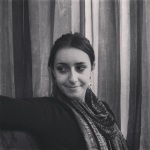The Arnavutkoy Museum: Hadimkoy Station Challenge
General Information on the Project
Hadimkoy is a small Turkish city 44 km from Istanbul which belongs to the Arnavutkoy municipality. The city, like the rest of the broader Arnavutkoy area, is included in the greater development plan of the Istanbul Metropolitan Municipality (Istanbul&Istanbul Metropolitan Municipality, 2011), which is planning the expansion and reorganization of Istanbul’s city borders, the formulation of satellite and smaller urban centers, and the expansion of the existing urban facilities such as: public transportation, green spaces and metropolitan parks, highways and a new airport. Consequently, the change of the environmental, social and structural characteristics of the Arnavutkoy district is expected.
Considering those future alternations, the rapid growth in the broader area of the Arnavutkoy municipality, the expansion of the urban zones and the increase of inhabitants, as described above, the formation of a museum which is going to collect, document, interpret, preserve, and promote the historical facts and traditions of the Arnavutkoy region seems crucial. That led to the decision, to turn two buildings of the Old Railway Infrastructure located in Hadimkoy city into a museum named Arnavutkoy Museum – Hadimkoy Station.
The museum will include:
A Local Cultural Landscape and Human Activity History Museum, where the permanent collection will be held; and
A Periodical Exhibition Venue, where temporary exhibitions will be hosted. Their subject could vary, but still should be related to the museum purposes.
The subject of the Arnavutkoy Museum – Hadimkoy Station will be the presentation of the local history and lifestyle in time through the relation and interaction of human activity and landscape. On one hand, the way that the environment set the conditions in which local activity developed (i.e. the Terkos Lake water supply system) and on the other hand, the way the people transformed the landscape, adapting it to their activities and needs (Aksoy 2012; 5th International Architecture Biennale, 2012). Respectively, its mission will be to demonstrate and narrate to the public this landscape and social change depended on the cultural activity. To reveal the natural, demographic, ethnic, economic, religious, architectural and urban alternations that formed Arnavutkoy’s region contemporary characteristics (UNESCO, 2008, 2014; Kartaler 2012).
A Museum without a Collection, a Reversed Process
It’s common sense that when speaking about a museum, one of the most important components is its collection. In the Arnavutkoy Museum – Hadimkoy Station the material gathered so far is historical data concerning the previous function of the buildings; facts related with the railway system, maps which locate Hadimkoy and older villages of the Arnavutkoy area during time, as some demographic information concerning the population which lived in the area before the population exchange in 1923-24 (Stavridou, 1991; Meellas 2000). Hence, a material collection is not gathered yet. Research results will be exhibited within the museum premises, and through public awareness more tangible and intangible assets are expected to be gathered. So, how can a museum without tangible collection function and what is its importance?
The most fascinating fact in the Hadimkoy Station Museum case is that the present of the Arnavutkoy district is the collection which should be gathered. Realizing that in a few years the area will be changed from the ground up, now is a unique opportunity to collect objects and testimonies which in a few years will belong to the past, and nothing will remind Arnavutkoy’s current aspect.
Archaeologists usually gather findings which they can’t explain or identify, because they belong to a civilization which doesn’t exist anymore. So they come up with assumptions or hypothesis, concerning their function and utility. Respectively the social and economic activity remains mainly an interpreted assumption (Pearce, 1994) .
In this case there is the opportunity not to have assumptions about the aspect of the area, but real testimonies considering all the important facts which are indicating the environmental, social, cultural, and economic activity in Arnavutkoy. This is the reason why it is proposed the collection gathering to be implemented vice-versa. Starting from year 0, which is today, the collection should be gathered and interpreted backwards. The residents of Arnavutkoy – Hadimkoy, especially the elders are the most important component in this effort, as they are carrying all the important knowledge connected with everyday activities and landscape alternations (Jones 1997).
Bibliography
5th International Architecture Biennale (2012), “Arnavutkoy, Istanbul, Making City/Kent Yapmak”, Rotterdam
Acela Meellas (2000), “Kadikoy and Derkos Metropolis Stamps”, Foundation of the Hellenic World, Athens, pages: 19-20, 271, 342-348, 433
Aksoy Asu (2012), ‘Atelier Arnavutköy: strategies for Istanbul’s sustainability‘, International Conference, Italy
B.Th. Stavridou (1991), [professor in the Theological school of Khalkis], “The metropolis of Chalcedon, Derkos, and Prince Islands”, for the Ecumenical Patriarchate, published by Kyriakides Bros, Thessaloniki, pages 196 – 203
Istanbul&Istanbul Metropolitan Municipality (2011), ‘Facts & Figures about Turkey and İstanbul, İstanbul a vibrant city of a thriving country‘.
Pearce Susan (1994) [editor], ‘Interpreting Objects and Collections‘, Routledge, UK.
Siân Jones (1997), ‘The Archaeology of Ethnicity, Constructing Identities in the Past and Present‘, Routledge, UK.
UNESCO (2008), ’Guidelines On The Inscription Of Specific Types Of Properties On The World Heritage List’, UNESCO World Heritage Centre, France
UNESCO, Cultural Lanscape, available in: http://whc.unesco.org/en/culturallandscape/ , accessed 04/04/2014
Yesim Kartaler [editor] (2012), “Making a Sustainable City, The Arnavutkoy Approach”, Architecture Workroom Brussels, IABR, Belgium
 Theodora Tsitoura is an alumna student of MA in Heritage Management 2012, with a Bachelor in International and European Economic Studies (AUEB). Currently she is a volunteer in the Exile Museum of Athens and in Diadrasis NGO. Theodora’s main interests are Heritage Management, Dark Heritage, Urban Heritage and Cross-Institutional Interdisciplinary Collaboration management.
Theodora Tsitoura is an alumna student of MA in Heritage Management 2012, with a Bachelor in International and European Economic Studies (AUEB). Currently she is a volunteer in the Exile Museum of Athens and in Diadrasis NGO. Theodora’s main interests are Heritage Management, Dark Heritage, Urban Heritage and Cross-Institutional Interdisciplinary Collaboration management.



